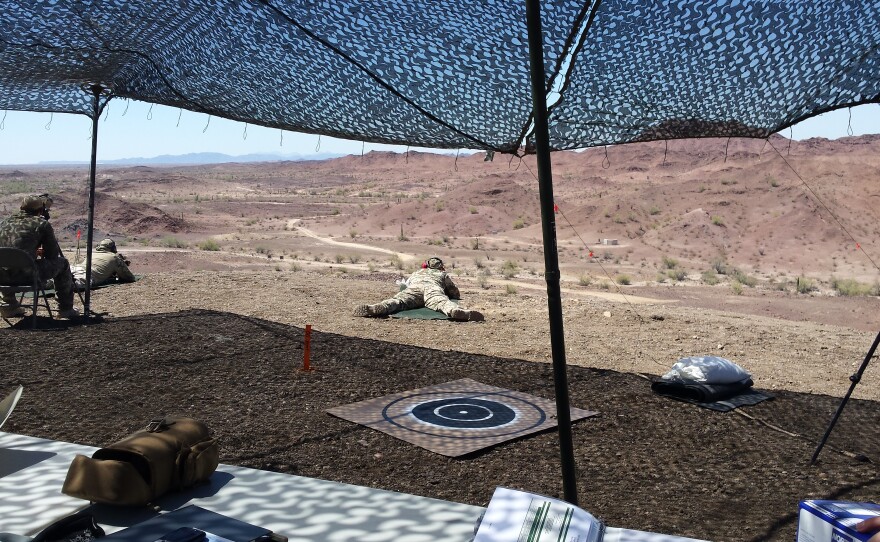Artillery responds to changes in climate, and when soldiers want to test weapons in a hot, dry environment, one of the places they come to—is a Yuma Army Base. And it’s not just U.S. military operations. Maya Springhawk Robnett of the Arizona Science Desk reports.
Yuma Proving Ground is a military testing facility that straddles Yuma and La Paz Counties. It is here on this expanse of desert larger than the state of Rhode Island that new weapons are examined, old ammunition is tested for safety or recall, and retired equipment is kept in working condition for possible future use.
On this windy morning, seven members of a German Special Operations Unit will test a new rifle. Martin Hummel is a German exchange engineer for YPG and the designated Responsible Test Officer. “In Europe or in Germany," Hummel explains, "there is just temperate climate and we want to make sure that the sniper rifle also works under desert conditions—hot, dry conditions.”
The gun being tested today is the G29 rifle.
Two snipers lie down just where the cliff drops off. They each fire five rounds, hundreds of meters away into the basin far below. The other soldiers observe computer screens streaming close-up camera footage of the targets to see where the shots have landed.
David Dupuis with YPG observes the snipers take aim. The importance of a test in these conditions, he says, is that the slightest change in weather can affect how a rifle behaves—from the trajectory of the bullet to the function of the rifle’s basic mechanics. “Everything takes into consideration. The humidity, the wind, the temperature. They factor all that in. So…you can’t just take a gun as a sniper, lay down, and think you’re going to be a sniper. These guys are highly trained and there’s a lot that goes into it.”
When the other soldiers see a shot appear on the screen, they place a pebble on a matching target on the ground to mark where it was hit. Once they’ve finished shooting, they’ll examine the targets up close.
Sergeant Major Andreas Jung is the German commanding officer. He explains that the old rifle this one would replace still works, but it is outdated. “The old sniper rifle is twenty years old," Jung nods. "It is time for a new one.”
Jung has been here at YPG before. So have members of the Canadian and other foreign military. Due to decades of Middle Eastern conflicts, YPG—with its similar terrain—has become an international weapons destination, and often at the forefront of ballistics technology.
Several years ago, the Metrology and Simulation Division of YPG began working on new ways to look at gun tubes for large weapons. Before that, inspecting a barrel for test purposes involved mirrors, flashlights, and peering into the gun tube. Now, they use laser mapping. Adam Rinne, a test officer with YPG, says Yuma Proving Ground spearheaded the tech. “The technology started here as just kind of a science project and once other testing facilities got a hold of the idea, it just kind of grew from there. But I know Yuma—I wanna say pioneered it because a lot of other facilities had input but we were one of the first to use the laser mapping.”
YPG Commander Colonel Randy Murray says working with other nations in tests is just good diplomacy. “If we have nations that we have friendly relationships with, then we have the ability to mutually support them and then if we need something, they can mutually support us, also,” Murray explains.
Japan, Great Britain, and South Africa are just a few U.S. allies that have used YPG’s facilities. The German sniper rifle G29 also will be tested in Panama to gage its performance under tropical conditions.










